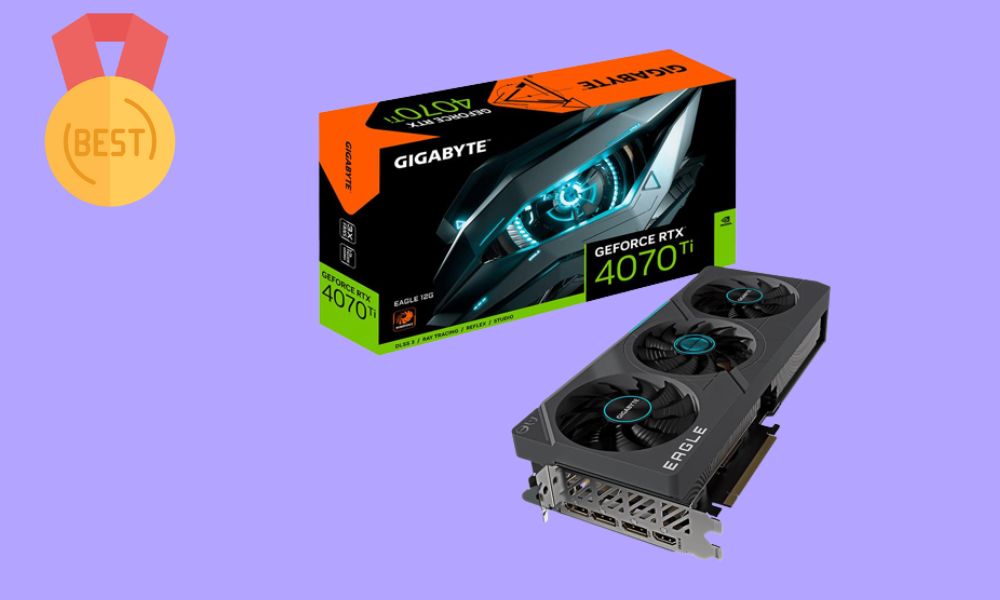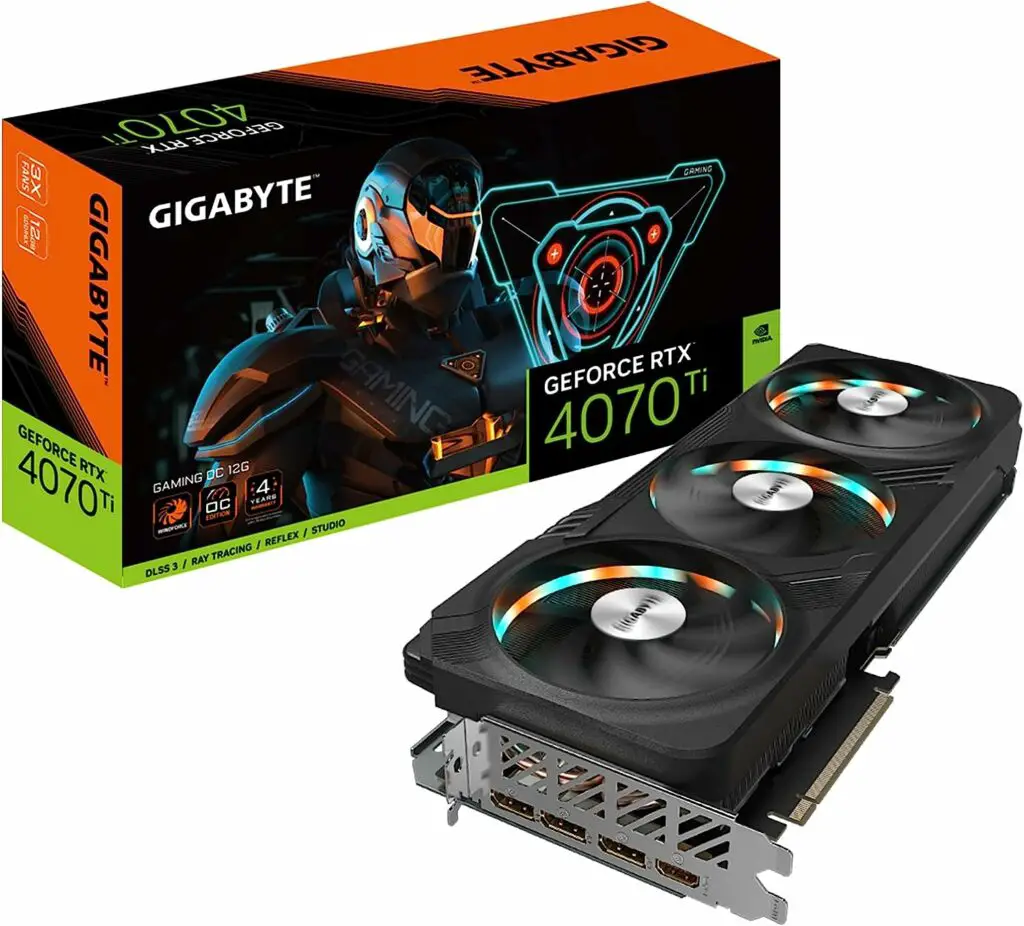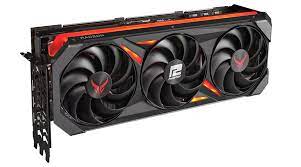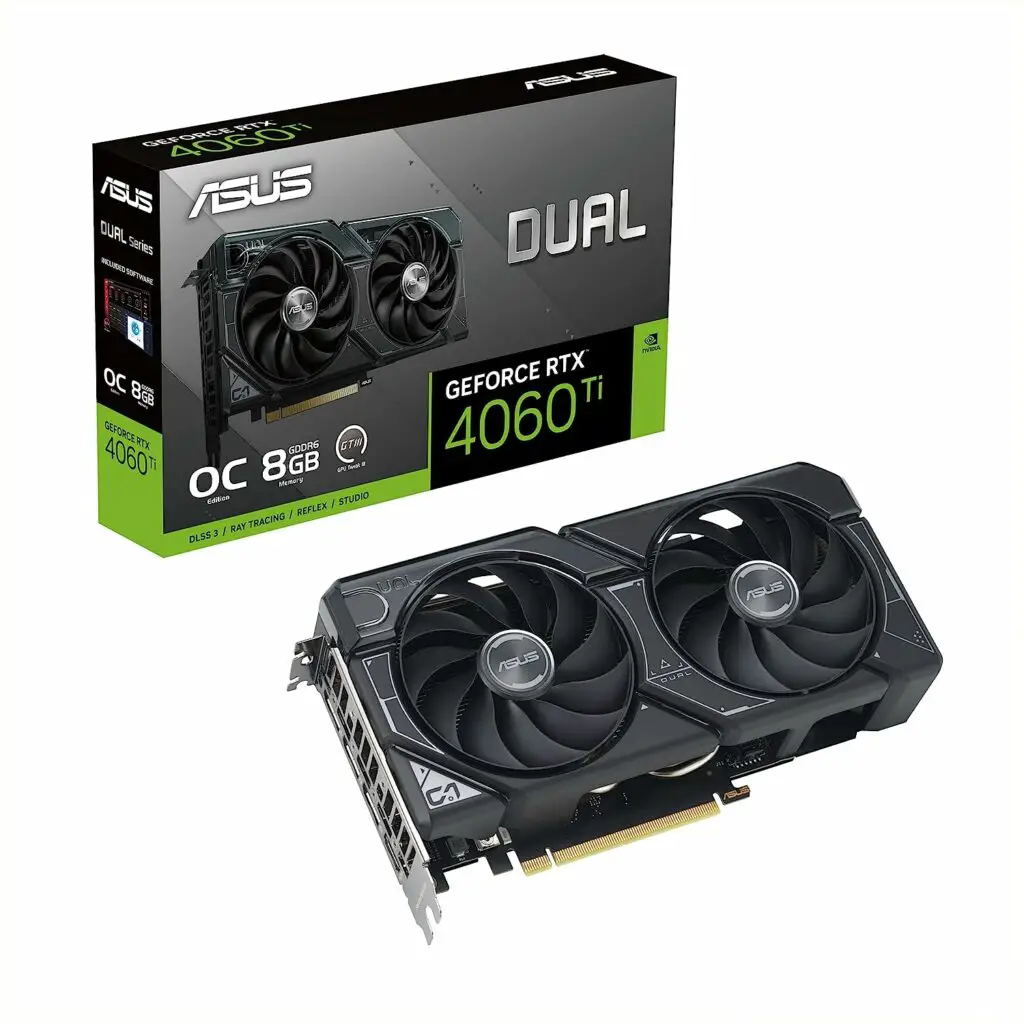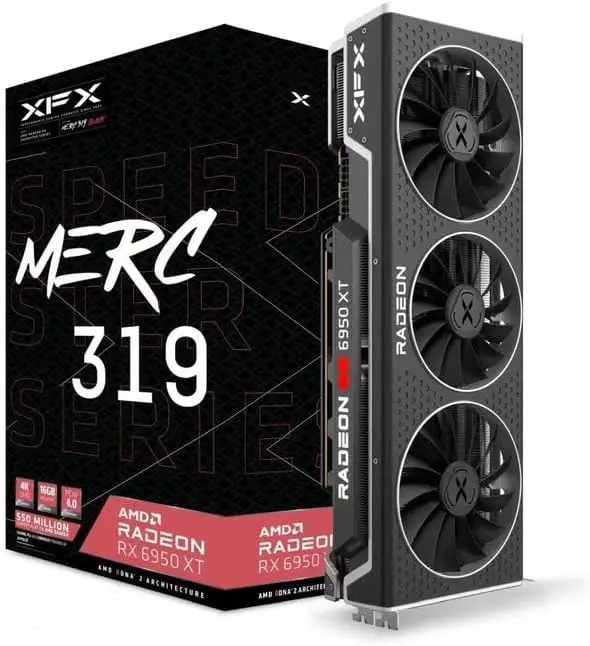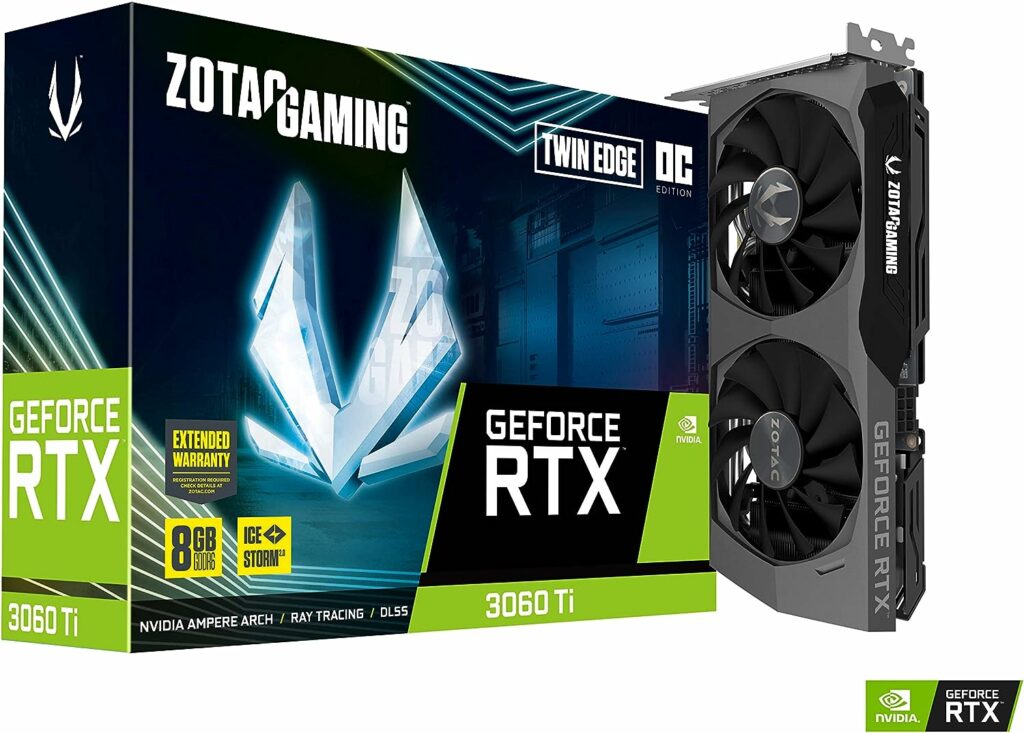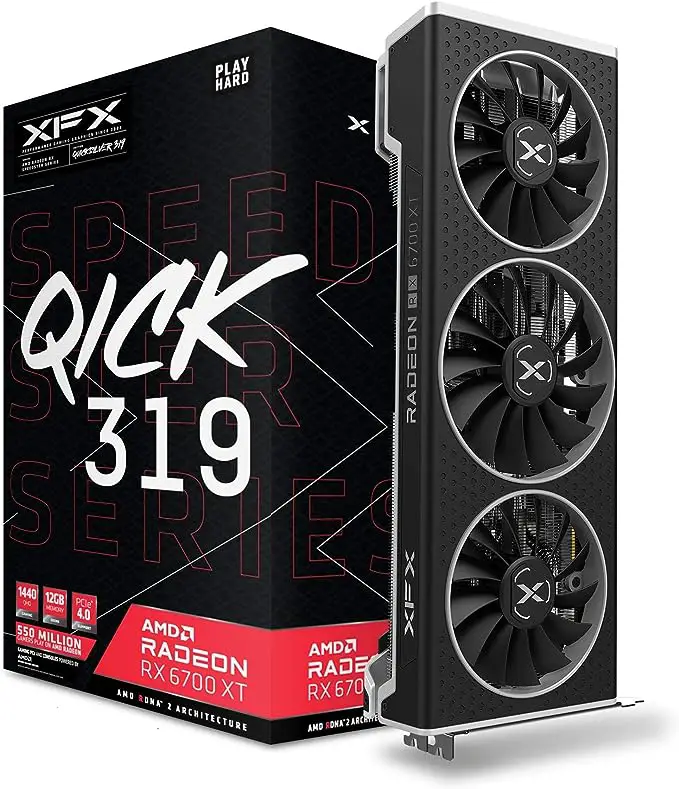Looking to buy the best what is recommended GPU for Baldur’s Gate 3? Baldur’s Gate 3 is a beautiful and immersive RPG that requires a powerful GPU to run smoothly.
Baldur’s Gate 3 features stunning graphics, immersive gameplay, and a rich story that adapts to your choices. However, to enjoy the Baldur’s Gate 3 game at its full potential, you will need a powerful graphics card that can handle the game’s high system requirements.
Baldur’s Gate 3 is both CPU and GPU intensive, if you want to have a smooth and stable experience, you should make sure that both your CPU and GPU meet or exceed the recommended system requirements.
Baldur’s Gate 3 Graphics Card Requirements
The minimum graphics card requirements for Baldur’s Gate 3 are:
- Nvidia GeForce GTX 970 or AMD Radeon RX 480
- 8GB of RAM
- Windows 10 64-bit
The recommended graphics card requirements for Baldur’s Gate 3 are:
- Nvidia GeForce RTX 2060 Super or AMD Radeon RX 5700 XT
- 16GB of RAM
- Windows 10 64-bit
As you can see, Baldur’s Gate 3 is a demanding game that requires a lot of storage space and a decent graphics card to run smoothly. The minimum system requirements are not too high, but they will only allow you to play the game at low to medium settings and resolution. If you want to experience the game at high or ultra settings and resolution, you will need to meet or exceed the recommended system requirements.
To help you choose the best graphics card for Baldur’s Gate 3, we will use the GPU benchmarks to compare some of the most popular and powerful graphics cards on the market.
List of recommended Best GPU For Baldur’s Gate 3
- Gigabyte RTX 4070 Ti : Overall Best Graphics Card For Baldur’s Gate 3
- PowerColor Red Devil RX 7900 XTX : Best AMD GPU For Baldurs Gate 3
- ASUS Dual RTX 4060 Ti : Best Budget GPU For Baldur’s Gate 3
- XFX Speedster RX 6950XT : Best Graphics Card To Run Baldur’s Gate 3
- ZOTAC Gaming RTX 3060 Ti Twin Edge OC : Cheapest GPU for Baldur’s Gate 3
- XFX Speedster Radeon RX 6700 XT :
Baldur’s Gate 3 System Requirements
Before we look at the graphics cards, let’s first check the minimum and recommended system requirements for Baldur’s Gate 3. According to the game’s official Steam page, these are the specifications you will need to run the game on Windows 10 64-bit:
Minimum system requirements
- Processor: Intel i5-4690 / AMD FX 8350 or better
- Memory: 8 GB RAM
- Graphics: Nvidia GTX 970 / AMD Radeon RX 480 (4GB+ of VRAM)
- DirectX: Version 11
- Storage: 150 GB available space
Recommended system requirements
- Processor: Intel i7 8700k / AMD Ryzen 5 3600 or better
- Memory: 16 GB RAM
- Graphics: Nvidia GTX 2060 Super / AMD RX 5700 XT (8GB+ of VRAM)
- DirectX: Version 11
- Storage: 150 GB available space
1. Gigabyte RTX 4070 Ti : Overall Best Graphics Card For Baldur’s Gate 3
The Gigabyte RTX 4070 Ti delivers the overall best graphics card for Baldur’s Gate 3, it a combination of performance, features, and value for playing Baldur’s Gate 3 smoothly.
Powered by Nvidia’s latest Ada Lovelace architecture, the 4070 Ti breezes through Baldur’s Gate 3 with max settings at 1440p while costing hundreds less than premium cards like the 4080 and 4090. Its 12GB of GDDR6X memory and boost speeds up to 2610 MHz provide excellent frame rates without breaking the bank.
Ray tracing is fully supported for enhanced lighting immersion and Nvidia DLSS 3 utilizes AI to boost fps. The 4070 Ti also runs cooler and quieter than its more powerful counterparts, making it an easier fit for a wider variety of PC builds for different builds, even for graphics designing.
While it can’t quite hit the 4K/60fps mark of pricier options, the 4070 Ti delivers an incredible 1440p Baldur’s Gate 3 experience at a friendlier $799 MSRP. Gamers who don’t need the overkill power of an RTX 4090 will find it hits the sweet spot.
For those seeking top-tier Baldur’s Gate 3 performance without overspending, the Gigabyte RTX 4070 Ti stands out as the best overall graphics card. It brings next-gen power to the game at 1440p without costing an arm and a leg.
Know More:
- Best Motherboard For RTX 4070 Ti
- Best PSU For RTX 4070 Ti
- Best Monitor For RTX 4070 Ti
- Best CPU For RTX 4070 Ti
- Best RTX 4070 Ti
2. PowerColor Red Devil RX 7900 XTX : Best AMD GPU For Baldurs Gate 3
If you’re looking for an AMD graphics card that can handle Baldur’s Gate 3 with ease, the Radeon RX 7900 XTX is your best bet. Powered by AMD’s cutting-edge RDNA 3 architecture, the 7900 XTX delivers incredible performance in demanding games like Baldur’s Gate 3 and heavy tasks like rendering.
With speeds up to 2563 MHz and a generous 24GB of GDDR6 memory, the 7900 XTX gives you the power to max out Baldur’s Gate 3 settings at 1440p or even 4K resolution. You’ll enjoy buttery smooth framerates as you explore the intricate worlds of Baldur’s Gate 3.
While it lacks some of Nvidia’s proprietary features like DLSS and advanced ray tracing, the 7900 XTX still goes head to head with the RTX 4090 when it comes to pure 4K gameplay performance. And at a more reasonable price point, it’s a smarter buy for gaming at high resolutions.
For stunning 4K visuals and fluid gameplay in Baldur’s Gate 3 without breaking the bank, the AMD Radeon RX 7900 XTX is the best AMD GPU solution. It delivers excellent Baldur’s Gate 3 framerates for hundreds less than the competition.
Know More:
- Best PSU For RX 7900 XTX
- Best Motherboard For RX 7900 XTX
- Best Monitor For RX 7900 XTX
- Best CPU For RX 7900 XTX
You May also Like This: Best Laptop For Baldurs Gate 3
3. ASUS Dual RTX 4060 Ti : Best Budget GPU For Baldur’s Gate 3
The ASUS Dual RTX 4060 Ti presents an interesting option for budget-conscious gamers looking to play Baldur’s Gate 3. Priced under $400, it delivers solid 1080p and 1440p performance at a more affordable cost than higher-end RTX models.
Powered by NVIDIA’s Ada Lovelace architecture, the 4060 Ti provides excellent speeds up to 2610 MHz boost clock and makes use of AI-powered DLSS 3 frame generation for smoother gaming performance. The 8GB of GDDR6 memory is less than higher RTX models but sufficient for Baldur’s Gate 3.
In testing, the 4060 Ti achieved over 60FPS in Baldur’s Gate 3 maxed out at 1440p, making high refresh rate gameplay possible. It should breeze through 60FPS+ at 1080p high settings. Ray tracing is supported as well for enhanced lighting and reflections.
The dual-fan cooled design keeps noise and temperatures in check. Ports include HDMI 2.1 and DisplayPort 1.4a for compatibility. The compact size also makes it easy to fit in many ITX builds.
For those seeking strong 1080p/1440p Baldur’s Gate 3 performance under $500, the ASUS Dual RTX 4060 Ti is a cost-effective choice over pricier cards. Just don’t expect maxed out 4K gameplay, where higher-end RTX models are required. No doubt, an excellent value pick for buttery smooth Baldur’s Gate 3 action.
Know More:
- Best Motherboard for RTX 4060 Ti
- Best PSU For RTX 4060 Ti
- Best Monitor for RTX 4060 Ti
- Best CPU for RTX 4060 Ti
- Best PC Case for RTX 4060 Ti
- Best RTX 4060 Ti
4. XFX Speedster RX 6950 XT : Best Graphics Card To Run Baldur’s Gate 3
For a best graphics card run Baldur’s Gate 3, look no further than the XFX Speedster MERC319 RX 6950XT. This powerful AMD graphics card far exceeds the recommended requirements for Baldur’s Gate 3, delivering high frame rates even at 4K ultra settings.
Powered by AMD’s advanced RDNA 2 architecture, the 6950XT utilizes 128MB of Infinity Cache to reduce latency and boost gaming speeds. This revolutionary technology enables over 60fps gameplay in Baldur’s Gate 3 at max 4K resolution, so you can immerse yourself in its stunning worlds without lag or stuttering.
Whether you game in 4K or 1440p, the XFX 6950XT renders Baldur’s Gate 3’s environments in incredible detail. And with its efficient architecture, you can expect smooth performance in other demanding titles like Cyberpunk 2077 and Red Dead Redemption 2.
For an unparalleled Baldur’s Gate 3 experience with fluid framerates and jaw-dropping visuals, the XFX Speedster RX 6950 XT is the best graphics card solution. AMD Infinity Cache unlocks its full 4K gaming potential.
Know More:
5. ZOTAC Gaming RTX 3060 Ti Twin Edge OC : Cheapest GPU for Baldur’s Gate 3
The Zotac RTX 3060 Ti Twin Edge presents a compelling cheapest choice for playing Baldur’s Gate 3 smoothly without breaking the bank. Priced well under $400, it’s one of the most affordable RTX 30 series options.
This card utilizes NVIDIA’s Ampere architecture to deliver excellent 1080p and 1440p gaming performance. In Baldur’s Gate 3, it achieves 60+ FPS on max settings at 1440p, or well over 100FPS at 1080p. The 8GB GDDR6 memory provides enough VRAM for modern games.
Cooling is handled by a capable twin fan cooler and heatsink array. It runs quietly and has freeze fan stop technology. The compact size also makes fitting into small form factor builds easy.
Connectivity includes DisplayPort 1.4a and HDMI 2.1. Ray tracing is supported for enhanced lighting, but lacks DLSS 3.0. Still, performance is smooth and power efficient.
If you are on tight budet and looking Baldur’s Gate 3 gaming, the Zotac RTX 3060 Ti Twin Edge delivers solid 1080p/1440p performance under $400. It’s a cost effective choice compared to pricier RTX models. Just don’t expect maxed out 4K gameplay. Overall, a great value for smooth 60FPS+ Baldur’s Gate 3 gameplay without breaking the bank.
6. XFX Speedster Radeon RX 6700 XT
The XFX Speedster RX 6700 XT Gaming Graphics Card is a good option for a cheap GPU for Baldur’s Gate 3.
Even if you want to play Baldur’s Gate 3 with nice graphics and smoothness, it can do that at 1440p and high settings. The XFX Speedster RX 6700 XT can also handle other tough games like Cyberpunk 2077 and Red Dead Redemption 2 in the same quality.
According to some benchmarks, the XFX Speedster SWFT309 AMD Radeon RX 6700 XT CORE Gaming Graphics Card can achieve an average of 75 FPS at 1080p ultra settings, 60 FPS at 1440p ultra settings, and 40 FPS at 4K ultra settings in Baldur’s Gate 3.
The XFX Speedster RX 6700 XT can also handle other demanding games like Cyberpunk 2077 and Red Dead Redemption 2 at 1440p with high settings.
The XFX Speedster SWFT309 AMD Radeon RX 6700 XT CORE Gaming Graphics Card is relatively affordable compared to other graphics cards with similar performance.
Best Baldur’s Gate 3 Graphics Settings
Here are some key graphics settings to adjust in Baldur’s Gate 3 to optimize performance and visuals:
- Resolution – Lower resolutions like 1080p are easier to run than 1440p or 4K. Match resolution to your monitor and GPU capabilities.
- Anti-Aliasing – TAA provides a good balance of image quality and performance impact. Lower AA for more FPS.
- Shadow Quality – High or Ultra shadows have a noticeable performance cost. Lower to Medium or Low to improve FPS.
- Texture Quality – Lowering this reduces VRAM usage. Try Medium or High for best visuals without overusing VRAM.
- Effects Quality – This controls spell, weather and water effects. Set to Medium or High for ideal balance.
- Draw Distance – Lowering draw distance can boost FPS with minimal visual change. Medium is a good compromise.
- VSync – Enable to eliminate screen tearing. Disable to reduce input lag.
- Framerate Cap – Capping framerate below monitor refresh rate (e.g. 60 FPS) saves GPU resources.
- Ray Tracing – Turn off for maximum performance. Enable for enhanced lighting at an FPS cost.
- Upscaling – AMD FSR or Nvidia DLSS boosts FPS with minimal quality loss.
Adjusting these settings based on your GPU and target framerate can provide an optimal Baldur’s Gate 3 experience.
How to Choose the Best GPU For Baldur’s Gate 3
Here are some key things to consider when choosing the best GPU for Baldur’s Gate 3:
- Resolution & Framerate Goals – The resolution and target framerate you want to play at will impact the GPU needed. Higher resolutions like 1440p or 4K demand more powerful GPUs, as do higher refresh rates like 144Hz.
- RDNA 2 vs Ampere/Lovelace – AMD RDNA 2 and Nvidia Ampere/Lovelace architectures provide the best performance in demanding games like Baldur’s Gate 3. Compare benchmarks between newer GPUs using these architectures.
- VRAM – Baldur’s Gate 3 can utilize over 10GB of VRAM at high settings. Aim for at least 8GB of VRAM, with more providing headroom.
- Ray Tracing Support – Baldur’s Gate 3 has ray traced lighting and shadows. Nvidia RTX cards or AMD RX 6000/7000 cards will enable these enhanced graphical features.
- DLSS/FSR Support – DLSS and FSR are upscaling technologies that boost FPS. Nvidia DLSS and AMD FSR improve performance in Baldur’s Gate 3 significantly.
- Budget – Determine the GPU price range you’re comfortable with. More money brings more performance, but excellent options exist even in mid-range budgets.
- Power Requirements – Make sure your PSU can provide adequate power for the GPU being considered. Aim for at least a 650W 80+ Gold PSU.
Considering these factors will help narrow down the best Baldur’s Gate 3 GPU for your needs and budget. Focus on resolution, framerate, architecture, and features.
Conclusion
When it comes to the best GPU for enjoying Baldur’s Gate 3’s stunning visuals and immersive gameplay, Nvidia and AMD both have excellent options. For most gamers, the Gigabyte RTX 4070 Ti strikes the ideal balance of performance and value as the overall best card for Baldur’s Gate 3.
With its powerful Ada Lovelace architecture, the 4070 Ti delivers incredibly smooth 4K gameplay in Baldur’s Gate 3 while costing hundreds less than premium GPUs. Gamers wanting max AMD performance can look to the Red Devil RX 7900 XTX, which utilizes RDNA 3 technology to compete with Nvidia’s finest.
More budget-focused buyers have great cheaper alternatives like the ASUS Dual RTX 4060 Ti and XFX RX 6950 XT. And those on a strict budget can still enjoy Baldur’s Gate 3 smoothly on the RTX 3060 Ti or RX 6700 XT. While the 4070 Ti is the top choice, multiple Nvidia and AMD GPUs give you the power to experience Baldur’s Gate 3 as its developers intended – with jaw-dropping quality.
FAQs
I’d recommend at least an RTX 2060 or RX 5700 XT for smooth 1080p gameplay, or an RTX 3070/RX 6800 or better for 1440p or 4K resolution. A powerful GPU is key to running Baldur’s Gate 3 well, so focus on getting the best card you can afford in your budget. The newest RTX 40 series and RX 7000 cards will also crush Baldur’s Gate 3 at 4K.
While Baldur’s Gate 3 usesa lot of CPU power, the GPU does more of the heavy lifting overall. You’ll want at least a mid-range or better GPU like an RTX 2060 or RX 5700 XT to maintain high framerates at high settings. A powerful multi-core CPU helps too, but the GPU is the primary determinant of performance. Focus on getting the best graphics card you can for smooth Baldur’s Gate 3 gameplay.
The XFX Speedster RX 6700 XT offers the best price-to-performance ratio if you’re looking for smooth 1080p or 1440p gameplay on a budget. The RX 6700 XT hits the best balance of price and performance for playing Baldur’s Gate 3 smoothly without overspending.
For smooth gameplay at 1080p and high settings, an RTX 2060 or RX 5700 XT is recommended. More powerful cards like an RTX 3060 Ti or RX 6600 XT can comfortably do 1080p/high and also handle 1440p gaming.
High-end cards like an RTX 3080 or RX 6800 XT are best for maxing out settings at 1440p and 4K resolutions. The latest RTX 40 series and RX 7000 cards are also excellent options.
There are a lot of factors like VRAM and GPU generation that affect performance too. But in general, if your card is in the GTX 1060 or RX 580 class or better, you should be able to run Baldur’s Gate 3, just potentially not at max settings. Let me know your specific GPU model and I can provide a more tailored estimate of how it will handle the game!
